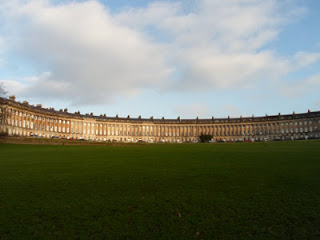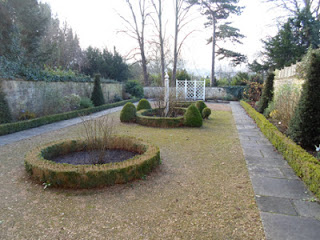-
Bath
Bath, as noted in my previous post, is a lovely place. It’s also quite old, dating back to the Iron Age when the settlement was called Bah. This was because they didn’t have a word for “A really pretty place but of limited use,” so when people asked what the area was called they just said, “Bah.” Eventually a settlement grew up around the River Avon and, because “Bah by the River Avon” was too long to chisel into the “Welcome to the Town Of…” sign, they just called it “Bath.”
Bath was discovered by the Romans who assumed, because of the name, that there would be baths there. Imagine their disappointment. So being the world-class engineers that they were, they diverted the hot springs from Hot Springs, Dorset, to the now aptly named town of Bath. Hot Springs, Dorset, naturally, fell on hard times with the loss of the mineral water trade, and is now known as Lyme Regis.(Incidentally, this is the same thing that happened at the town of Battle in East Sussex; the Normans and the English were looking for a place to have the battle of Hastings and, even though Battle is some miles away, they decided it was too good an opportunity to pass up, so the armies marched out to the marshy fields around Battle and, well, had their battle. But the march tired out Harold’s men and that was why the English lost.)So the Romans built the baths at Bath and took their baths there and the fortunes of Bath rose, as did several temples, an abbey, Marks and Spencer, an architecturally sympathetic Waitrose and at least one proper cigar shop.In 1987, in recognition of its outstanding retail appeal (they have a Next, an East and even a Paperchase), Bath was named a World Heritage Site, ensuring the livelihoods of architectural restoration tradesmen throughout Somerset for many years to come.(Editor’s Note: none of that is actually true.)
Just a random street in Bath; really, just about any place is pretty. 
Abbey Green, a quaint and quiet little cul-de-sac. 
Because of the tourist trade and their connection to Roman Britain,
people are encouraged to walk around dressed as Roman Centurions.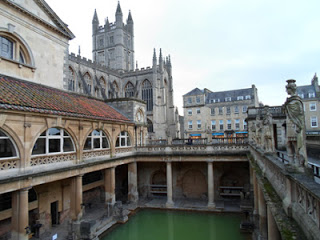
The main bath with the Abbey in the background; truly stunning. 
This is another of the baths, a pool fed by hot springs for a jacuzzi-like experience. 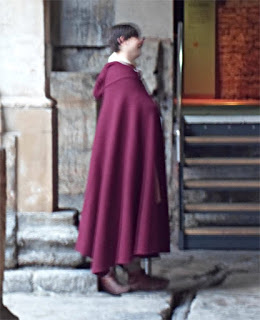
See, I told you… 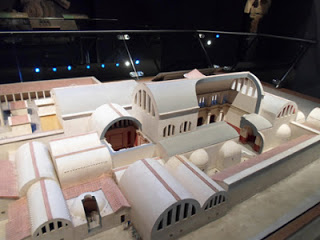
One of the things that surprised me was how big the bathing complex was;
the building in the middle with the roof cut away is where the first photo was taken.
Of course you must have a Bath Bun while you are there! 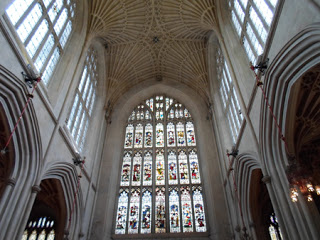
Um, there\’s an abbey; sorta okay, but York Minster was better. 
Although, Bath Abbey does have this: the holy relic of the
Justin and Janet Wardrobe Malfunction.
This is the Circus, after the elephants have all gone home.
This ring of Georgian houses was build by John Wood Sr. & Jr.
1754 thru 1769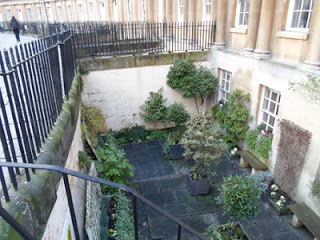
Even the basement apartments are luxurious, though they
call them Garden Flats.
This stunning semi-circle of Georgian homes, just down the street
from the Circus, is the Royal Crescent. When they use it as a
backdrop for period dramas, they make everyone move their cars.
There is no reason for this photo other than to show my friends
back in New York what winter in southern England is like.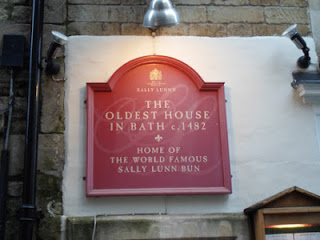
This is the oldest house in Bath, which means, in 1482, there was just
this house sitting by itself near the river with nothing but fields around it.
(Editor\’s Note: this, actually, is not.)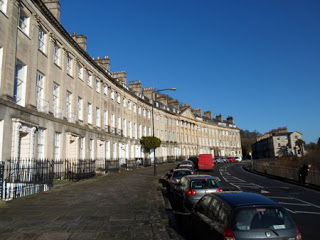
Almost anywhere you go in Bath there are stunning sights.
We ran across this–Camden Crescent–during an aimless ramble.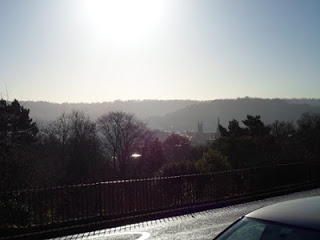
This is the view the people lucky (and rich) enough to live
in Camden Crescent have.
The Pulteney Bridge. 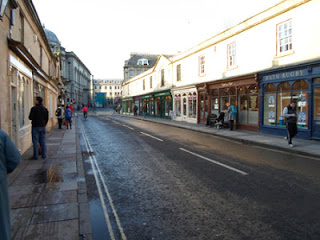
On the bridge; I walked across it without knowing it was a bridge. 
How many beers did it take to make this sign necessary? 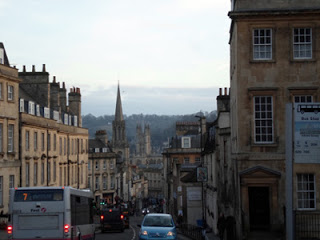
View as we walked down the hill on the way to the station. 
One last glimpse at a very beautiful and historic city. Sorry about all the photos, but I hope you enjoyed looking at them as much as I enjoyed taking them. And, really, you need to get to Bath.

